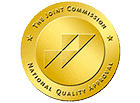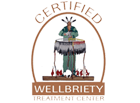Dealers of street drugs often use a variety of other chemicals to “cut” the substance they are selling, which stretches the value they get from using a smaller amount of the substance and using fillers to achieve the same volume of the product they sell.
What is a “cut”?
Basically, a “cut” is the mixture of chemicals that street dealers will mix into their substances to make the amount of illicit drugs they have go farther. Dealers will use chemicals to cut a substance in order to get more money while using a smaller amount of the actual desired drug. Many cutting agents are odorless, colorless, and tasteless while remaining to be the same texture of the original illicit substance that it’s being mixed into.
It’s especially scary that most cuts blend into the illicit drug, as users have no idea the dangerous chemicals that could be mixed in. Illicit drugs are dangerous enough, let alone containing a variety of added harmful chemicals. No illicit drug is safe from being cut. Along with the cut, there is also the rising popularity of dealers using a pill press to create knock-off prescription pills using substances that are fillers and other less expensive drugs that mimic the same effect as the desired prescription.
A cut is especially popular with illicit drugs like cocaine, heroin, molly (MDMA), and meth. Cutting agents, or the “cut”, is used to essentially dilute the product so that the same profit can be made while using less of the originally sought after illicit substance, while keeping the same volume of the actual product.
In the Cut: Cocaine
In 2010, CNN reported that 55% of cocaine is all cut, meaning that only around around 45% of the substance is actually cocaine. So, what are you really ingesting? It’s impossible to know for sure, and this goes for any street drug. Cocaine dealers constantly cut their product in order to stretch the product and make more money.
For example, cocaine dealers will use a variety of different chemicals to create their own personal cut. Common, less-harmful chemicals used to cut cocaine include: baking soda, powdered milk, flour, sugar, and salt. Some extremely dangerous chemicals that are commonly used to cut cocaine include:
These chemicals are numbing agents, or topical anesthetic drugs. These chemicals can potentially increase the potency of cocaine, leading to cardiac arrest or an overdose.
An analgesic, or painkiller, that was taken off the market for over-the-counter use because of a list of adverse and dangerous side effects— including kidney damage and its’ carcinogenic properties in humans.
It is pretty common for street dealers to mix in other illicit substances into their cut, in order to intensify effects while using a small amount of the substance. Meth or amphetamine medications like Adderall or Vyvanse may be added to increase the stimulant effect.
Also known as over-the-counter medications like Tylenol. At large doses, this drug can lead to liver failure, a risk that increases when mixed in cocaine or alongside alcohol.
It’s not uncommon to find extremely toxic chemical substances mixed into illicit drugs. It is possible to have traces of lead inside of cocaine, which can result in cancer, gastrointestinal upset, anemia, renal failure, seizures, and a coma.
It is mainstream practice to mix in caffeine pills into a cocaine cut. Caffeine will increase the addictive properties of cocaine and increase the stimulant effect of the substance.
In 2009, it was found that nearly 70% of all cocaine found in the U.S. contained this veterinary deworming agent, that is known to quite literally rot the flesh of a person’s face. Levamisole has serious side effects, including: brain damage, changes to blood count and vessels, thinning the prefrontal cortex, permanent impairment of functioning, and levamisole also attacks the central nervous system (University of Zurich).
Fentanyl is a potent and lethal chemical; this chemical is 100 times stronger than morphine and can cause overdose and death even in the smallest amounts. Fentanyl has been sneaking its way into cuts for not only heroin or pressed pills, but also it is recently being used to cut cocaine. Cocaine cut with fentanyl has already claimed many lives.
In the Cut: Heroin
Heroin is already an extremely potent and deadly illicit opioid drug. To make heroin even more lethal, much of the heroin today is being cut with the extremely potent and deadly chemical fentanyl. Common cutting agents for heroin include:
Fentanyl is an extremely potent and lethal synthetic opioid. As fentanyl is 100 times more powerful than morphine, it is a recipe for overdose and death— even in its smallest amounts. In its pure form, fentanyl can literally kill you just from touching the substance.
Hairspray is commonly used in both heroin and cocaine cuts to give the visual effect of “clumps” or a more crystalized product that has the appearance of being more pure.
Some dealers will even go as far as adding dust or dirt into the product they are selling. You have no idea what is in the heroin you are buying off the street, making the potential for overdose or extreme health problems a huge risk.
In the Cut: Meth
Being a completely manmade illicit drug, meth or methamphetamine is already an extremely dangerous substance that has toxic effects on the body on its own. To add fuel to the fire, meth is often cut with extremely dangerous additives, including:
A material used to create rechargeable batteries and a variety of other products.
Hydrochloric acid is a strongly acidic chemical that can disintegrate skin, and attack the skin in a range of ways. Hydrochloric acid is used in many industrial projects, like the production of steel beams.
In the Cut: Ecstasy and Molly
Ecstasy is a pressed pill version of what is meant to be MDMA, a stimulant drug that induces a euphoric state— as the name suggests. The stimulant illicit drug Molly is thought to be MDMA also, although molly rarely contains any solid trace of MDMA. In New York from the years of 2011-2015, out of all of the molly confiscated and analyzed,only 13% of the substance was actually MDMA. Molly is a more modern version of ecstasy, and comes in crystal form or already within capsules. Some common cuts for ecstasy and molly include:
According to a chemist’s account, ecstasy tablets confiscated and analyzed were contained 15-20% of meth.
Bath salts are a white or brown crystal-like powder than has severe adverse side effects. Common side effects from synthetic cathinones include: extreme paranoia, hallucinations, increased friendliness, panic attacks, and excited delirum— a range of extreme agitation and violent behavior. Bath salts also produce severe health effects, and their intoxication can easily lead to death. Health effects from bath salts include: increased heart rate and blood pressure, chest pain, a breakdown of skeletal muscle tissue, and kidney failure. People associate bath salts with zombie-like behaviors, and there are many documented cases of those under the influence of bath salts aggressively attacking people and actually trying to bite their faces.
Another illicit drug which is actually used as an animal tranquilizer in veterinary settings.
Another illicit drug that produces hallucinations and erratic behavior. Often referred to as “angel dust” or “wet.”
Synthetic MDMA.
Final Thoughts
Essentially, any drug is dangerous, but especially illicit street drugs— as you never know what is inside of the substance. Dangerous cuts can cause overdose and a range of adverse and severe side effects. At Royal Life Centers, we treat addiction holistically, focusing on healing in the mind, body, and spirit. Our comprehensive addiction treatment programs help you overcome your addiction and rebuild a happy, healthy, and meaningful life in sobriety. Drug abusers put themselves at risk each time they use an illicit (or prescription) drug. We are committed to helping as many people as we can through our comprehensive addiction treatment, and never-ending support. Our treatment centers are experienced in treating all addictions, and can help you overcome your addiction and the effects it has had on you— including the impact on your mental, physical and spiritual health. We offer medication or medically assisted treatment (MAT) to help guests fully recover from the harmful effects of drugs.
Our Treatment
Royal Life Centers provides a variety of treatment programs, developed to follow guests through the stages of the recovery process— offering guidance and support each step of the way. Royal Life Centers offers both inpatient and outpatient treatment services, including: medical detox, a residential inpatient program, a partial hospitalization program (PHP), an intensive outpatient program (IOP), an outpatient program (OP), sober living and graduate housing. Our addiction treatment programs all use intensive therapies, including: individual therapy sessions, group therapy, behavioral therapies, adventure therapy, activity therapy, and equine therapy. Our treatment plans are completely individualized, developed by guests alongside their case manager and primary therapist to specifically tailor a plan that meets their personal needs, goals, and circumstances. Our drug rehab centers are located in the states of Washington and Arizona. We make addiction recovery possible, and are dedicated to helping you build a life rooted in happiness, health, and meaning.
References:
University of Zurich. “Cocaine adulterant may cause brain damage.” ScienceDaily. ScienceDaily, 31 October 2018.
“What Are the Most Dangerous Cutting Agents?” Clinical Services, American Addiction Centers, clinicalservicesri.com/dangerous-cutting-agents/.
If you or someone you know is struggling with an addiction, please reach out to our addiction specialists at (877)-RECOVERY or (877)-732-6837. Our team of addiction specialists make themselves available to take your call 24 hours a day, 7 days a week. Because We Care.




